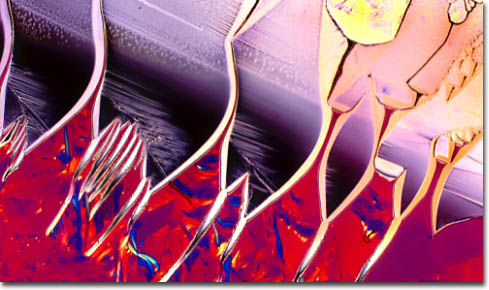|
Ethidium is chemical that has been utilized extensively in molecular biology and biochemistry laboratories, most often in its bromide form. The pharmacologically active substance is a trypanocidal agent and a nicotinic antagonist, but is featured here as a dye because of its wide use as a nucleic acid stain. Ethidium bromide, which appears as dark red crystals in its pure, dry form, fluoresces a reddish-orange hue as a dye when examined under either short or long wavelengths of ultraviolet light. Known also as ethobromide, homidium bromide, and dromilac, the functional substance is not without its drawbacks, however, having been identified as a serious mutagen, toxin, and possible carcinogen. Due to the potential hazards involved with its use, a number of less toxic fluorescent dyes have been developed in recent years, but demand for ethidium bromide remains relatively high.
|
